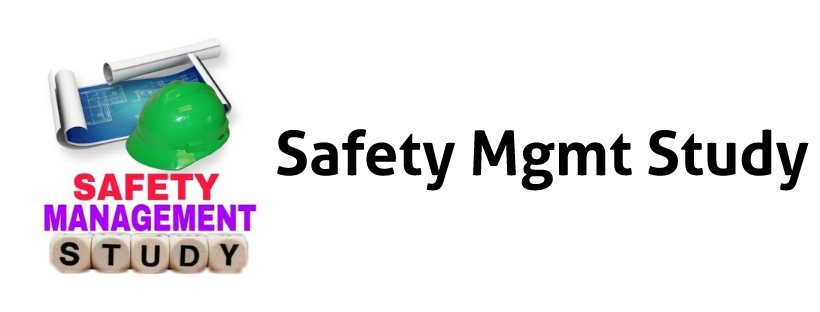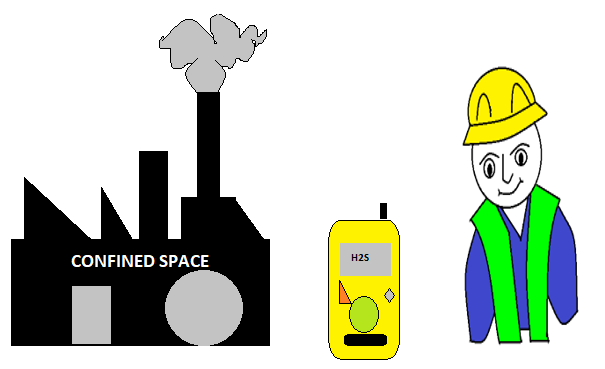AGT - Authorised Gas Tester Interview Question and Answers.
If you are searching Interview question and answers for AGT then you are at right pace. in this blog post AGT - Authorised Gas Safety Interview Question and Answers. provided. all person cant become an AGT, to become an AGT you must need to clear AGT Examination.
Q. Who is AGT?
AGT - Authorised Gas Tester is a person who appointed by employer to carry out atmosphere test in critical environment such as confined space, petrochemical, oil & gas plants to carry out work safely.
AGT is a competent person who have required knowledge of gases present in the critical environment and he can identify gases through gas detector, there is a prime role of AGT before and during work in critical environment. If you want to be an authorised gas tester you need to cleat AGT exam test, in this blog post Authorised gas tester interview questions and answers are provided which will help you to become am authorised gas tester.
AGT - Authorised Gas Tester Interview Question and Answers.
Q. What is LEL
& UEL?
LEL – LEL stands for Lower explosive
limit, LEL is the minimum concentration of flammable vapour which can burn at
the presence of ignition source.
Q. What is UEL?
UEL – UEL stands for Upper explosive
limit, UEL is the maximum concentration of flammable vapour which can burn at
the presence of ignition source.
Q. What is
Flammability range?
The flammability range describes the
range of flammable vapour i.e. the minimum
and maximum concentrations at which a given vaporous substance will ignite or
combust when mixed with air.
Q. What are the
types of Gas detector?
- Semi - conductor gas detector
- Thermal conductivity gas detector
AGT - Authorised Gas Tester Interview Question and Answers.
Gases need to tested: -
- For Personal Safety
- For Area Monitoring
- For Confined Space Entry
- For Leak Check (Storage tank, equipment)
- For Emergency Response
- For Protection of environment
- For Process Safety
- For identifying flammable atmosphere to issue Hot work permits
Q. Write name of three toxic gas.
- Carbon Monoxide
- Hydrogen Sulfide
- Chlorine
Q. Write three flammable gas.
- Propane
- Methane
- Acetylene
Q. Write three asphyxiant gas.
- Nitrogen
- Organ
- Helium
Q. What are the units for measuring concentration of gases?
- % (Percent) – Flammable gases
- ppm (parts per million) – Toxic gases
Q. What are the atmospheric hazards?
- Oxygen (deficiency and enrichment)
- Flammable gases and vapours
- Toxic contaminants
- Corrosive
Q. What is Oxygen deficiency?
The percentage of oxygen below 19.5 %
in the environment is considered as oxygen deficiency or lack of oxygen.
Q. What is
Oxygen enrichment?
The percentage of oxygen more than
23.5% in the environment is considered as oxygen enrichment.
Q. What are the
common flammability range of different gases?
Interview Question and Answers for AGT - Authorised Gas Tester
Q. Which gases must be tested before issuing confined space entry permit?
CO (Carbon Monoxide), O2
(Oxygen), H2S (Hydrogen Sulphide), Combustible gas/hydrocarbon
Q. Before
taking the reading of combustible gases make sure there is adequate oxygen
True/false?
True
Q. At what
value the low and high alarms of H2S sensor activates in portable
gas detectors?
Low 10 PPM & High 15 PPM
Oil & Gas Refinery Shutdown Job Hazards & Safety Precautions
Q. In portable
gas detectors at what value the low and high alarms of Oxygen sensor activates
at Low 19.5% & High 23% True/false?
True
Safety Definition
Q. At what LEL%
Hot work can be permitted in hazardous atmosphere?
At LEL 0%
Q. What is Time
Weighted Average (TWA)?
Toxic gas limits related to concentration
& time
Q. What is Short Term Exposure Limit (STEL)?
The maximum allowable concentration over 15
minutes
Q. What is Threshold Limit Value (TLV)?
The maximum allowable concentration over an
8-hour period
Q. Is Methane
gas is heavier than air?
No, it is lighter than air.
Q. Is H2s gas
is heavier than air?
Yes, it is heavier than air.
Q. Do we need
nitrogen in air to breath?
Yes, we need.
AGT Interview Question and Answers.
Q. What is Bump
test?
A bump test is a brief exposure of the
sensor to gas bump test verifies if the sensor is responding and the alarm is
functioning or not, Bump test is only valid for 24 hours.
Q. Validity of
calibration test?
6 months.
Q. Write the
sequence of gas testing?
Gas Testing Sequence:
- Oxygen
- LEL (Flammable gas / Vapour)
- H2S
- CO
·
Range is normally set to %LEL (Lower Explosive Limit)
·
Gas diffuses into sensor & reacts with oxygen on a
heated detector element.
·
Catalyst gas detector can only work in presence of
oxygen in atmosphere.
Q. Mention in brief about infrared gas detector.
1. Infrared detection is
a method of using light to detect the presence of flammable gas hazards.
2. Fast speed of response
3. Sensitivity
4. 0-100% LEL or LEL Meters
5. Works in Oxygen free
atmospheres
6.
Able to work in Nitrogen area
Q. NFPA — National Fire Protection Agency
Hazard Symbols:
– Blue — Health
– Red — Flammability
– Yellow — Reactivity
– White — Special (Read MSDS)
Read More: - Best 100 Safety Quotes





.jpg)









.png)

.png)
0 Comments